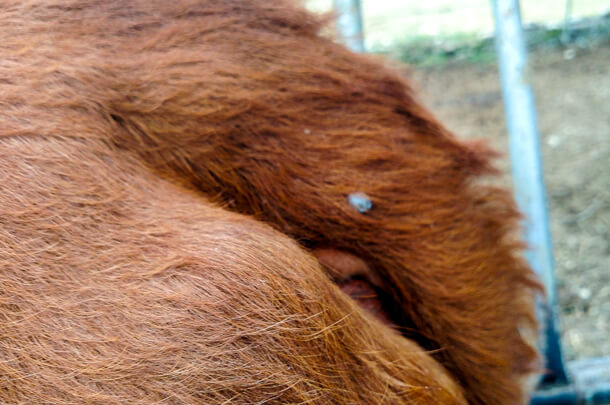This program began in 1906 by the forerunner of USDA’s Animal and Plant Health Inspection Service (APHIS), although limited efforts to control parasites began 20 years earlier. Its purpose was to remove the ticks that carried cattle fever babesiosis, caused by blood-borne protozoal parasites Babesia bigemina and B. bovis, which ranged as far north as Virginia. There are actually two ticks involved in carrying the fever: Rhipicephalus annulatus and R. microplus. Annulatus has a more northern range while microplus is more tropical.
Beginning in the Southeastern states and working toward the Southwest, county-by-county and state-by-state, by 1943 the fever ticks were eliminated to a narrow strip of land called the permanent quarantine zone (PQZ). The PQZ extends over 500 miles along the Rio Grande, from the town of Del Rio in the north to Brownsville and the Gulf of Mexico in the south, and ranges in width from less than a mile to more than 12 miles. The fever ticks can still be found occasionally within the PQZ, but none have ever tested positive for babesiosis.
Cattle and other domestic animals inside the PQZ must be treated before they can move outside the zone. For cattle, this usually involves total immersion in a long, narrow, deep bath or vat containing coumaphos (Coral) that they are forced to swim through, otherwise known as “dipping.” This total immersion ensures that if any ticks are on the cattle, they will be coated with the insecticide, including those deep in skin folds. For other livestock, dogs and people, spraying is required. There is a vaccine called Bm86 used experimentally in the PQZ. When a tick engorges blood from a vaccinated cow, the antibodies prevent the tick’s gut from absorbing nutrients and it dies from starvation.
Other animals can carry the fever tick and are generally the reason for minor outbreaks outside the PQZ, including deer (white-tailed, red or mule deer) or an imported Indian antelope, the nilgai.

The screwworm
These wild animals directly benefit from another massive pest control program: the Screwworm Eradication Program, which began in 1958. Screwworms were once found as far north as Virginia, Missouri and the lower half of California. The eradication program irradiated larval male flies, which were then dropped in boxes on infested areas where they dispersed and mated with female flies. Since the female only mated once, all of the subsequent eggs were sterile. The program was highly successful, eliminating a pest that killed or affected millions of head of domestic livestock and wildlife annually.
Screwworms haven’t been seen in the U.S. until recently, except in an occasional hunting dog returning from an infested country. In October 2016, several Key deer in the Florida Keys were diagnosed with screwworms, and in January 2017, a stray dog near Homestead, Florida, was also diagnosed. Authorities began dropping sterile male flies over the affected areas (1.9 million per week) to combat any spread.
Interestingly enough, these pests are linked. The elimination of screwworms and the increase in the white-tail deer population, and the nilgai, have made them an accessory to spreading the fever ticks. In Texas, three of the four temporary quarantine zones are a result of nilgai carrying the fever tick. Of course, there are other reasons, including the increase in absentee landowners and wildlife managers who don’t know about cattle ticks, the increase in brush acreage to promote wildlife (which ticks love), the lack of control of all ticks in general, and the lack of knowledge of fever ticks in particular.
Although it is not a food safety issue, it is a foreign animal disease. If the fever tick and the cattle fever were ever to return to the U.S., it would cause cattle deaths and illness, and the states affected with the ticks and fever would be subjected to stringent quarantine, affecting cattle movement and costing the U.S. cattle industry billions of dollars. ![]()

-
Joe C. Paschal
- Professor and Extension Livestock Specialist
- Texas A&M University
- Email Joe C. Paschal
PHOTO 1: Cattle inside the permanent quarantine zone must be treated before they can move outside of the zone. This usually involves total immersion in a long, narrow, deep bath or vat containing coumaphos (Coral).
PHOTO 2: A fever tick found at the tailhead of a cow. Photos provided by Joe Paschal.








